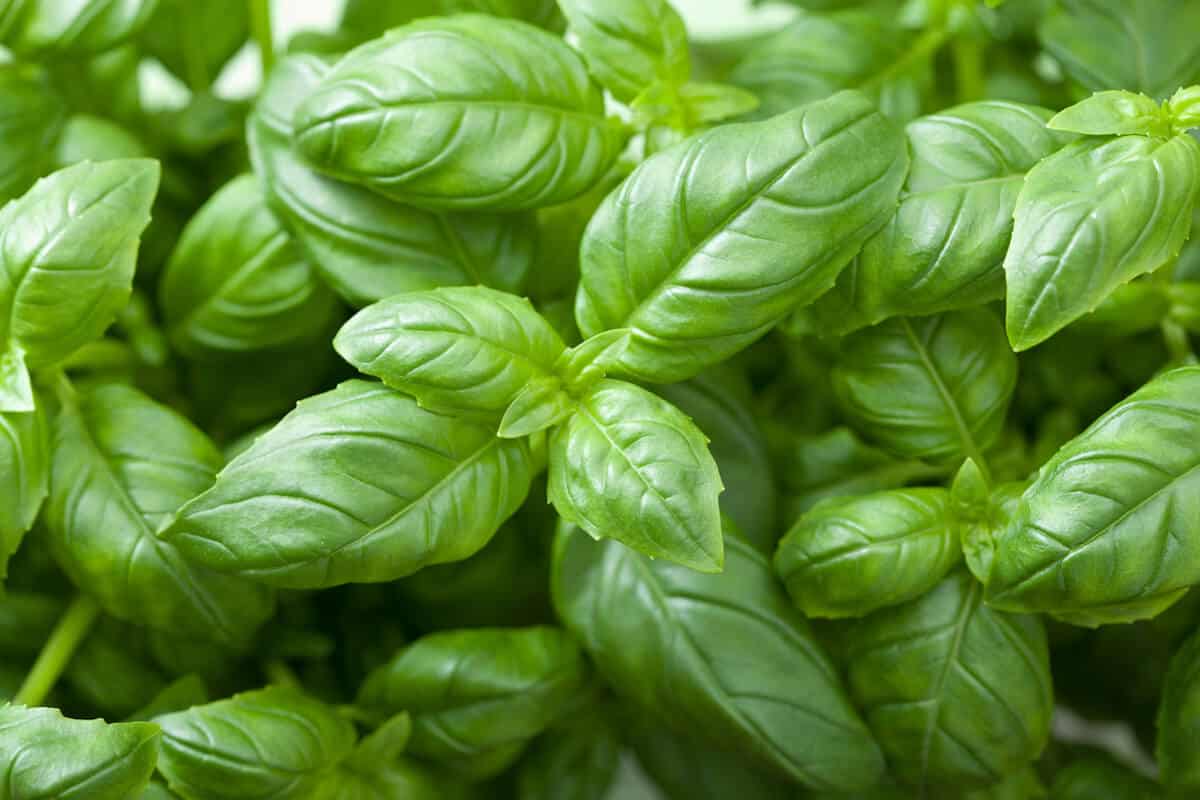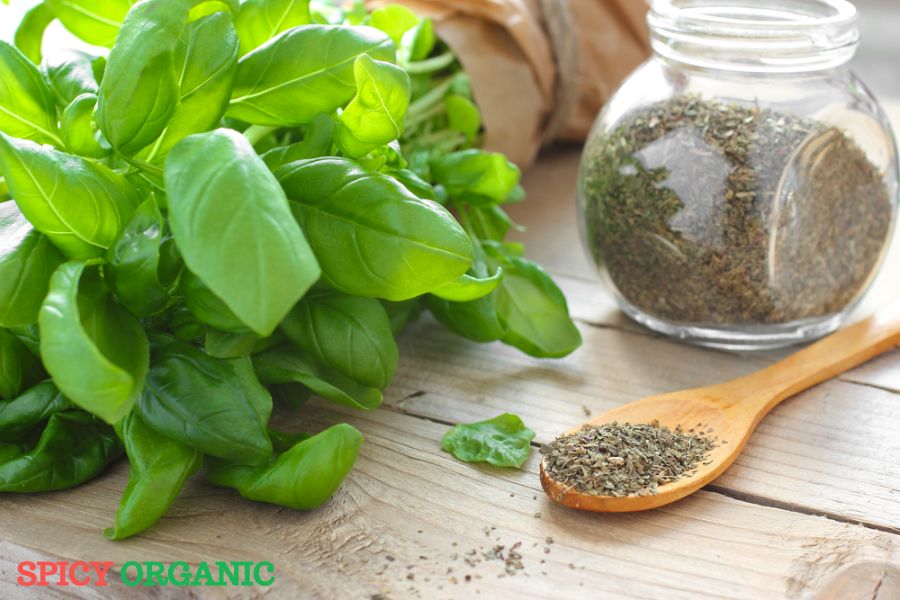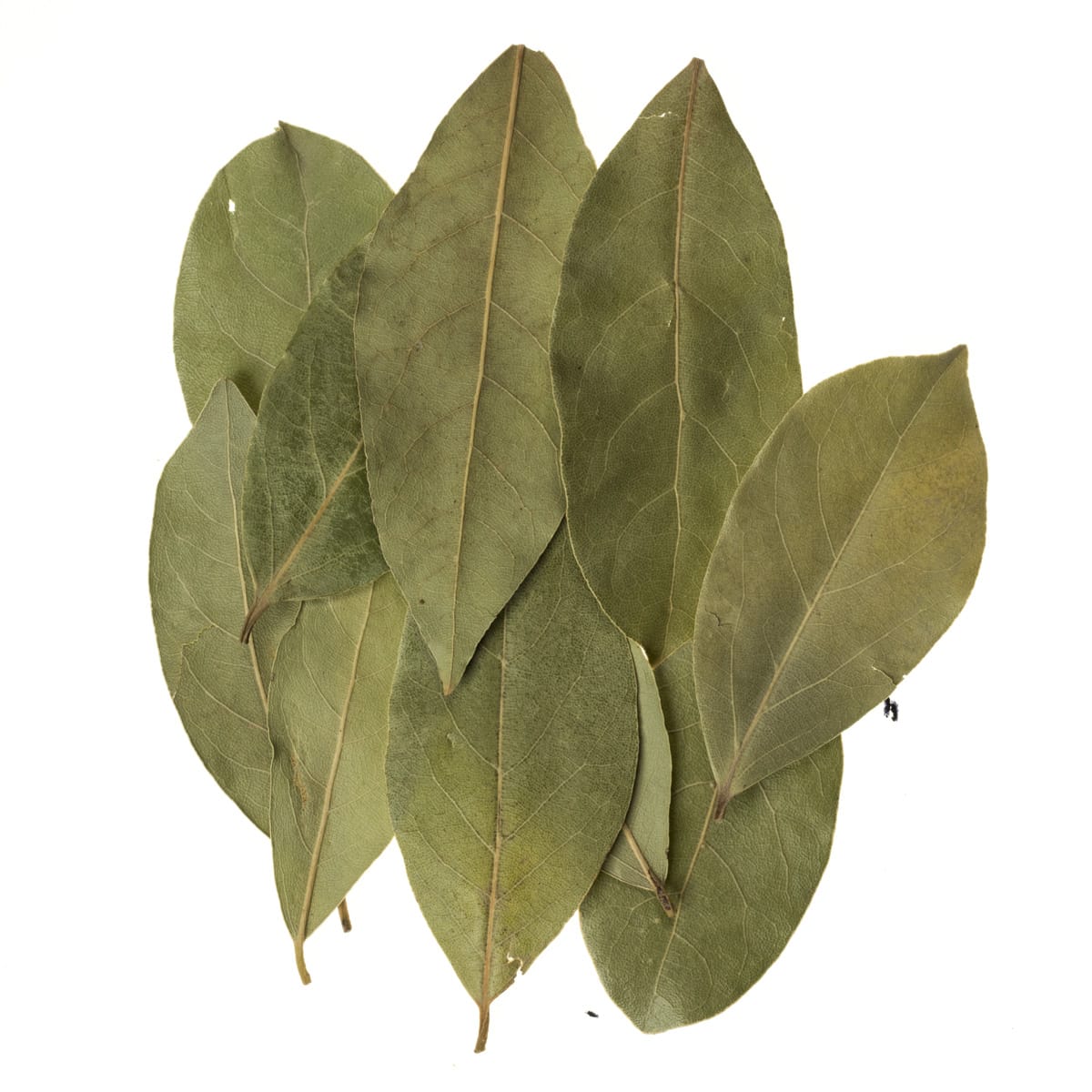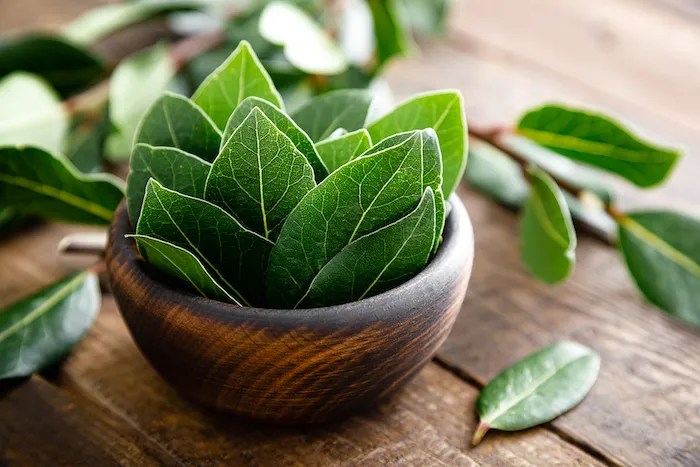Introduction

In the culinary world, herbs play a crucial role in adding depth, flavor, and aroma to various dishes. Two such herbs that are frequently used are basil and bay leaf. Both herbs have been cherished for centuries and are known for their distinctive characteristics. While basil is celebrated for its versatility and vibrant flavor, bay leaf is renowned for its ability to enhance the taste of dishes subtly. In this blog post, we will explore the key differences and similarities between basil and bay leaf, their historical significance, culinary uses, aromatic profiles, and health benefits. Whether you’re a seasoned chef or an amateur cook, understanding the unique qualities of these herbs will help elevate your culinary skills.
Overview Of Basil And Bay Leaf
Basil and bay leaf are both herbs commonly used in cooking to enhance the flavor of dishes. Basil is a versatile herb with a vibrant flavor that can range from slightly sweet to peppery. It is a staple in Mediterranean and Italian cuisines and is well-known for its use in pesto, salads, soups, and sauces. On the other hand, bay leaf has a more subtle, earthy taste with a slight bitterness. It is commonly used in Turkish, Indian, and French cuisines, adding depth and aroma to dishes like stews, braises, and rice pilafs. Both herbs have distinct characteristics that make them valuable in the kitchen.
History And Significance Of Basil And Bay Leaf In Culinary Use
For centuries, basil and bay leaf have played significant roles in culinary traditions around the world. Basil has a rich history and is believed to have originated in India before spreading to other parts of Asia, Africa, and Europe. It has been used in cooking and herbal medicine for its delicious flavor and potential health benefits. In Mediterranean and Italian cuisines, basil is regarded as a symbol of love and good luck. Similarly, bay leaf holds a special place in cuisines like Turkish, Indian, and French, where it is valued for its aromatic and flavor-enhancing properties. Both herbs have become indispensable ingredients in a wide range of recipes, adding depth and complexity to various dishes.
Basil: The Versatile Herb

Basil: The Versatile Herb
Basil is a highly versatile herb that adds a burst of fresh and aromatic flavor to dishes. With its bright green leaves and sweet, peppery taste, basil is a favorite in Mediterranean and Italian cuisines. It comes in various types such as sweet basil, Thai basil, and lemon basil, each with its own unique characteristics. Basil pairs well with tomatoes, garlic, and mozzarella cheese, making it a key ingredient in classics like caprese salad and pesto sauce. Additionally, its distinct aroma and flavor make basil a popular choice for garnishing soups, pasta dishes, and even desserts.
Different Types Of Basil And Their Characteristics
There are various types of basil, each with its own unique characteristics and flavors. Some of the most popular types of basil include:
- Sweet Basil: This variety is the most commonly used and has a slightly sweet and peppery flavor.
- Thai Basil: Known for its distinct licorice flavor, Thai basil is commonly used in Thai and Southeast Asian cuisines.
- Lemon Basil: As the name suggests, lemon basil has a citrusy aroma and taste, making it a great addition to seafood dishes and salads.
- Purple Basil: This variety has deep purple leaves and a similar flavor to sweet basil, with a slightly stronger peppery taste.
Each type of basil brings its own flavor profile and characteristics, allowing for a diverse range of culinary uses.
Culinary Uses And Popular Dishes With Basil
Basil is a versatile herb that is used in a wide variety of culinary creations. Its fresh, aromatic flavor adds a burst of freshness to dishes. Basil is a popular ingredient in Italian cuisine and is often used in tomato-based sauces, pesto, and Caprese salads. It pairs well with tomatoes, garlic, and olive oil. Additionally, basil adds a delightful twist to seafood dishes, soups, and grilled vegetables. It can also be used to infuse flavor into oils and vinegars. Overall, basil is an essential herb that enhances the taste and aroma of numerous dishes.
Bay Leaf: The Flavor Enhancer

Bay leaf is known for its ability to enhance the flavors of dishes. It adds a subtle and earthy taste that complements a variety of ingredients. Bay leaves are commonly used in slow-cooked dishes and stews, as their flavor develops and intensifies over time. They are often added at the beginning of the cooking process and removed before serving to infuse the dish with their aromatic qualities. Bay leaf can also be used in pickling brines, soups, and stocks to impart a rich and savory flavor. Its versatility as a flavor enhancer makes bay leaf a staple in many cuisines.
Varieties Of Bay Leaf And Their Distinct Flavors
Bay leaf comes in several varieties, each with its own distinct flavor profile. The most commonly used type is the Mediterranean bay leaf, which has a strong and slightly bitter taste. Turkish bay leaf, on the other hand, is milder with a more complex flavor. California bay leaf has a stronger eucalyptus-like taste, while Indian bay leaf is known for its spicy and floral notes. Each variety adds a unique flavor to dishes, allowing cooks to experiment and tailor their recipes accordingly. It’s important to choose the right variety of bay leaf to achieve the desired taste in your dishes.
Utilization Of Bay Leaf In Various Cuisines
Bay leaf is a popular ingredient in various cuisines around the world. In Mediterranean cuisine, it is commonly used in dishes like stews, soups, and sauces to add depth and aromatic flavor. In Indian cuisine, bay leaf is a key spice in biryanis and curries, bringing a warm and spicy note to the dishes. Mexican cuisine uses bay leaf in dishes like pozole and mole to enhance the flavors of the rich and complex sauces. In Filipino cuisine, bay leaf is an essential ingredient in adobo, a traditional braised dish. Overall, bay leaf adds a unique and distinctive flavor to dishes in a variety of culinary traditions.
Aroma And Flavor Comparison

The aroma and flavor profiles of basil and bay leaf differ significantly, contributing to their unique culinary uses. Basil is known for its vibrant and herbaceous aroma, with notes of sweetness and a hint of pepper. Its flavor is fresh and slightly sweet, adding a burst of freshness to dishes. On the other hand, bay leaf offers a more subtle and earthy aroma, with hints of menthol and pine. Its flavor is assertive and slightly bitter, enhancing the depth of savory dishes. Understanding these differences allows chefs and home cooks to select the right herb to enhance their recipes.
Aromatic Profiles Of Basil And Bay Leaf
Basil is known for its vibrant and herbaceous aroma, with notes of sweetness and a hint of pepper. The scent of basil is fresh and invigorating, adding a burst of fragrance to any dish. On the other hand, bay leaf offers a more subtle and earthy aroma, with hints of menthol and pine. The aroma of bay leaf is reminiscent of the outdoors and adds a depth of flavor to savory dishes. Understanding the unique aromatic profiles of basil and bay leaf allows chefs and home cooks to select the right herb to enhance the overall sensory experience of their recipes.
Taste Characteristics And How They Enhance Dishes
Basil and bay leaf have distinct taste characteristics that can greatly enhance dishes. The taste of basil is vibrant and herbaceous, with notes of sweetness and a hint of pepper. This adds a refreshing and aromatic flavor to sauces, salads, pasta dishes, and even desserts. On the other hand, bay leaf offers an earthy and woody taste, with a subtle hint of menthol and pine. Its flavor is more intense and complex, making it perfect for slow-cooked dishes, soups, stews, and marinades. Both herbs bring their unique tastes to dishes, elevating the overall flavor profile and creating a memorable culinary experience.
Health Benefits And Medicinal Uses

Basil and bay leaf not only enhance the flavors of dishes, but they also offer potential health benefits and have been used medicinally for centuries. Basil contains essential oils that have antimicrobial and anti-inflammatory properties, which may help boost the immune system and reduce inflammation in the body. It is also a good source of vitamins A, C, and K, as well as minerals like calcium and magnesium. Bay leaf, on the other hand, has been used in traditional medicine to aid digestion, relieve respiratory conditions, and lower blood sugar levels. It contains compounds that have antioxidant and anti-inflammatory effects. Both herbs can be enjoyed not just for their taste, but also for their potential health benefits.
Nutritional Value And Potential Health Benefits Of Basil
Basil is not only known for its delicious flavor, but it also packs a punch when it comes to nutrition. This aromatic herb is a good source of vitamins A, C, and K, which play important roles in maintaining healthy skin, supporting the immune system, and promoting blood clotting. Basil also contains minerals like calcium and manganese, which are essential for bone health and metabolism. Additionally, basil is rich in essential oils that have antimicrobial and anti-inflammatory properties, making it a potential ally in boosting the immune system and reducing inflammation in the body. So, not only does basil add a burst of flavor to your dishes, but it also offers potential health benefits.
Medicinal Properties And Traditional Uses Of Bay Leaf
Bay leaf is not just a culinary herb, but it also possesses medicinal properties that have been recognized for centuries. The leaves contain compounds with anti-inflammatory, antimicrobial, and antioxidant effects, making them useful for various health purposes. Bay leaf has traditionally been used to aid digestion, reduce bloating, and relieve symptoms of indigestion and gastric ulcers. It is also believed to have anti-diabetic properties and can help regulate blood sugar levels. Additionally, bay leaf has been used topically to soothe skin irritations and promote wound healing. Its medicinal properties make it a valuable addition to natural remedies and alternative medicine practices.
Conclusion

In conclusion, both basil and bay leaf are aromatic herbs that bring unique flavors and nutritional benefits to culinary dishes. Basil offers a wide range of varieties with distinct characteristics, making it a versatile herb in different cuisines. On the other hand, bay leaf enhances the flavor of dishes and has traditional medicinal uses due to its anti-inflammatory, antimicrobial, and antioxidant properties. When deciding which herb to use, consider the specific flavor and aroma profiles of each herb, as well as the desired health benefits. Incorporating basil and bay leaf into your cooking can elevate the taste and nutritional value of your meals.
Key Differences And Similarities Between Basil And Bay Leaf
Basil and bay leaf are both aromatic herbs that bring unique flavors to culinary dishes. However, they have distinct characteristics and uses.
Differences:
- Appearance: Bay leaves are larger and flat, while basil leaves are shorter and somewhat rounded.
- Flavor: Basil has a sweet and peppery flavor, while bay leaf offers a more herbal and slightly bitter taste.
- Culinary Use: Basil is often used fresh in salads, pesto, and Italian cuisine, while bay leaf is typically used dried in soups, stews, and sauces.
- Nutritional Benefits: Basil is rich in vitamins A and K, while bay leaf contains essential oils that impart health benefits.
Similarities:
- Aroma: Both basil and bay leaf have strong, pleasant aromas that enhance the fragrance of dishes.
- Medicinal Uses: Both herbs have traditional medicinal uses and offer antioxidant and anti-inflammatory properties.
In summary, while basil and bay leaf share some similarities, their distinct flavors, culinary uses, and nutritional benefits make them unique in the culinary world.
Choosing The Right Herb For Different Types Of Recipes
When it comes to selecting the right herb for your recipes, understanding the flavor profiles of basil and bay leaf is crucial. For dishes that need a fresh and vibrant taste, basil is the go-to herb. It works wonders in salads, pesto, and Italian cuisine. On the other hand, if you’re preparing slow-cooked or hearty dishes, bay leaf is your best bet. Its earthy and woodsy flavor complements soups, stews, and sauces perfectly. So, whether you’re aiming for a burst of freshness or a deep flavor, choosing between basil and bay leaf will elevate your culinary creations.
FAQ: Basil vs Bay Leaf
Q: What is the main difference between basil and bay leaf?
A: Basil and bay leaf are both herbs but they differ in terms of taste, aroma, appearance, and usage.
Q: How would you describe the taste and aroma of basil?
A: Basil has a sweet and slightly peppery taste with a strong aroma that is often referred to as herbaceous, slightly reminiscent of cloves and anise.
Q: What about the flavor and scent of bay leaf?
A: Bay leaf has a subtle, woodsy flavor with a slight bitterness and a distinct, pungent aroma.
Q: Can basil and bay leaf be used interchangeably in recipes?
A: Generally, no. Their flavors and aromas are quite distinct, so using one in place of the other could significantly alter the taste of a dish.
Q: What are the most common culinary uses for basil?
A: Basil is widely used in Italian and Thai cuisine. It often finds its way into pasta dishes, tomato-based sauces, pesto, salads, soups, and on top of pizzas.
Q: What type of dishes or cuisines commonly incorporate bay leaf?
A: Bay leaf is commonly used in Mediterranean, Indian, and Middle Eastern cuisines. It adds depth to stews, soups, braises, and rice dishes.
Q: Are the leaves of basil and bay leaf easily distinguishable?
A: Yes, they have distinct appearances. Basil leaves are smooth, bright green, and oval-shaped with a slightly pointed tip. Bay leaves, on the other hand, are leathery, dark green, elongated, and have a pointed tip.
Q: Are basil and bay leaf equally easy to find in supermarkets or grocery stores?
A: Basil is more commonly found and easily accessible, both fresh and dried, in most supermarkets. Bay leaf is also available in the spice section but may be less commonly used and might not always be as readily available.
Q: Can the two herbs be used together in recipes?
A: Absolutely! Some recipes call for both basil and bay leaf to impart different layers of flavor. However, it’s important to remove the bay leaf before serving the dish, as it is not meant to be consumed.
Q: Are there any health benefits associated with basil and bay leaf?
A: Both herbs have been used for their medicinal properties. Basil contains antioxidants and may have anti-inflammatory and antibacterial properties. Bay leaf has been suggested to aid digestion, reduce inflammation, and exhibit anti-fungal properties. However, it’s important to consult a healthcare professional before using them for any specific health purposes.
In summary, basil and bay leaf are distinct herbs with different flavors, aromas, and culinary uses. While basil has a sweet and peppery taste commonly used in Italian and Thai cuisine, bay leaf offers a pungent, woodsy flavor found in Mediterranean, Indian, and Middle Eastern dishes. Using them together can create unique flavors, but they are not interchangeable in most recipes.

Kemah Cafe is a family-owned eatery that takes pride in offering a delightful array of Vietnamese, Chinese, and Thai dishes. Located at the heart of the community, Kemah Cafe has been serving up delicious Pho and other authentic Asian cuisine for many years. Founded with a passion for sharing the flavors of the East, Kemah Cafe has become a beloved culinary destination for locals and visitors alike. The warm and welcoming atmosphere of the cafe, combined with the tantalizing aromas of freshly prepared dishes, creates an unforgettable dining experience.